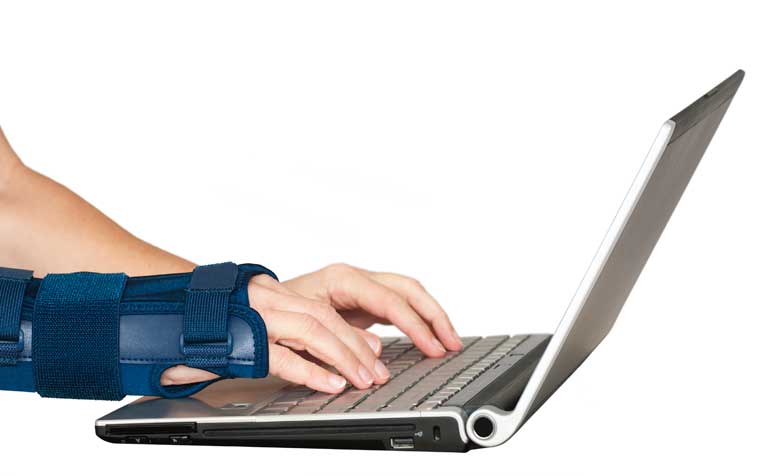
Relieve pain from Carpal Tunnel Syndrome with splints or braces.
Working long hours on the computer takes its toll in many ways, such as by causing carpal tunnel syndrome, an uncomfortable condition that affects the hands.
Dr Andrew Chin, Senior Consultant and Head, Department of Hand Surgery, Singapore General Hospital (SGH), a member of SingHealth Group, sheds some light on the condition, its causes and treatment.
What is carpal tunnel syndrome?
A person with carpal tunnel syndrome may feel numbness, tingling, pain or weakness in the hand. Sensation in the thumb, index and middle fingers and half of the ring finger is affected when the main median nerve in the forearm becomes compressed as it passes through the carpal tunnel – a passageway of tissues and bones at the wrist and base of the hand. The symptoms are often felt at night and after waking up in the morning.
In the early stages, the hand may occasionally feel numb and tingle mildly when gripping a bus handrail for too long, holding a book, using the telephone or cutlery, typing or doing household chores.
Later, the numbness and tingling become more persistent, which can keep the person awake at night. As the condition worsens, permanent damage to the nerve may occur. At this stage, much of the hand may lose its feeling and the muscles at the base of the thumb become weak.
Is there a link between repetitive motion and carpal tunnel syndrome?
Hand-intensive work, such as prolonged use of vibrating tools or power tools, has frequently been associated with carpal tunnel syndrome; but the debate on the relationship between repetitive motion and the condition is still ongoing. Often, the cause is unknown, although people who suffer from certain conditions appear to be more prone due to increased pressure within the carpal tunnel.
Is carpal tunnel syndrome a sign of a more serious health condition?
Often, diagnosis of carpal tunnel syndrome reveals a more serious underlying health condition during examination such as diabetes or rheumatoid arthritis.
How is carpal tunnel syndrome treated?
When the symptoms are still mild, treatment may include:
- Minimising wrist movement
- Relieving the pain using splints or braces
- Medication, such as vitamin B6 and anti-inflammatory drugs.
Reducing the swelling of the tissues within the carpal tunnel through use of oral diuretics and steroid injections has been reported. But such treatment only provides temporary relief and does not cure the underlying problem.
Surgery to divide the transverse carpal ligament – the fibres across the palm below the fingers – that presses down on the nerve is recommended when the symptoms persist, especially if they are affecting the patient’s quality of life. Minor surgery is often done under local anaesthesia, with the procedure completed within half an hour. Keyhole or minimally invasive surgery, with its advantages of a small incision and shorter recovery, is an alternative to open surgery.
When the nerve has sustained irreversible damage, carpal tunnel release surgery is still recommended. Although the pre-existing damage will not be reversed, surgery will help prevent a worsening of the condition that could lead to complete paralysis of the thumb muscles.
Ref. V10
Contributed by
















 Get it on Google Play
Get it on Google Play